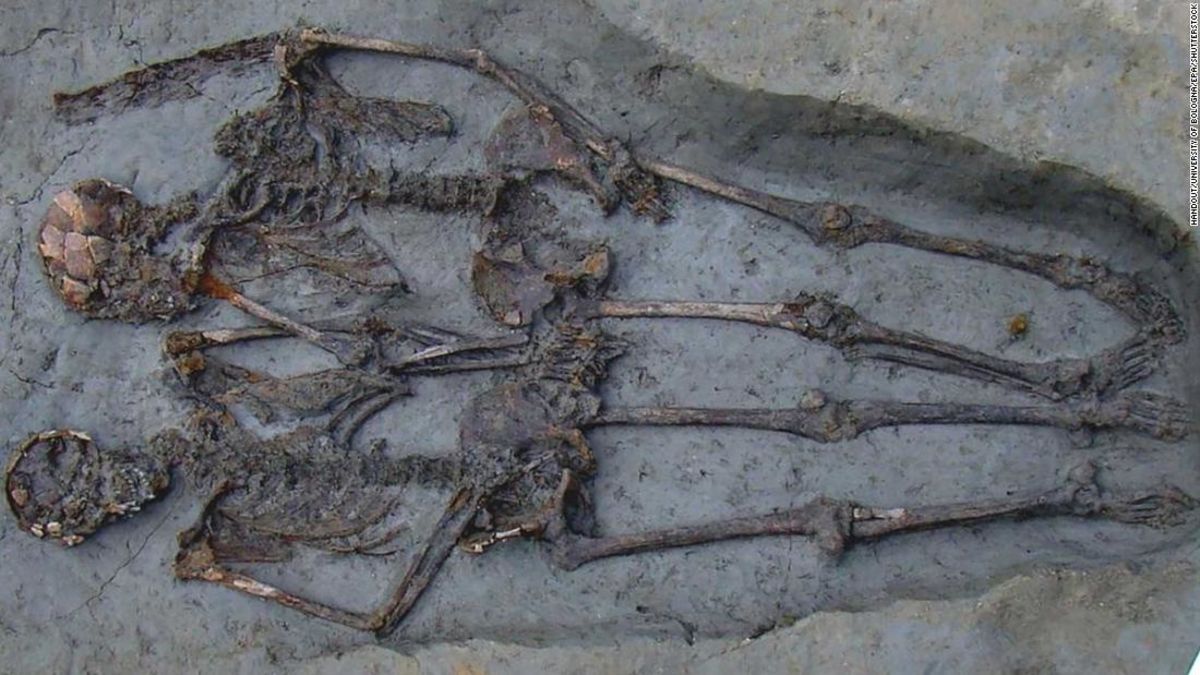Researchers from the Universities of Bologna and Modena disproved this assumption by testing proteins in their tooth enamel and finding, in both cases, a peptide present only in men. Their paper was published in the journal Nature on Wednesday.
The relationship of the pair, who are thought to have been middle-aged men who died between the 4th and 6th centuries AD, is currently unknown.
Federico Lugli, researcher at University of Bologna and author of the paper, told the ANSA news agency: “There are currently no other burials of this type. Several tombs have been found in the past with couples holding hands, but in all cases it was a man and a woman.
“What might have been the bond between the two individuals in the burial in Modena, instead, remains a mystery for now.”
Giulia Di Rocco, an assistant professor at the University of Modena and Lugli’s collaborator on the project, told CNN: “We are pretty sure they intentionally buried them together ” side by side.
“They could be brothers, cousins, friends,” she said. “They could even be lovers. They are all equally likely, I think.”
Di Rocco added that the necropolis where they were found, along with 11 other skeletons, might have been a war cemetery because some of the remains showed signs of violent deaths.
Other skeletons holding hands include the 6,000-year-old “Lovers of Valdaro” from Mantua, Italy and further pairs in Greece, Turkey, Siberia, England and Romania.
